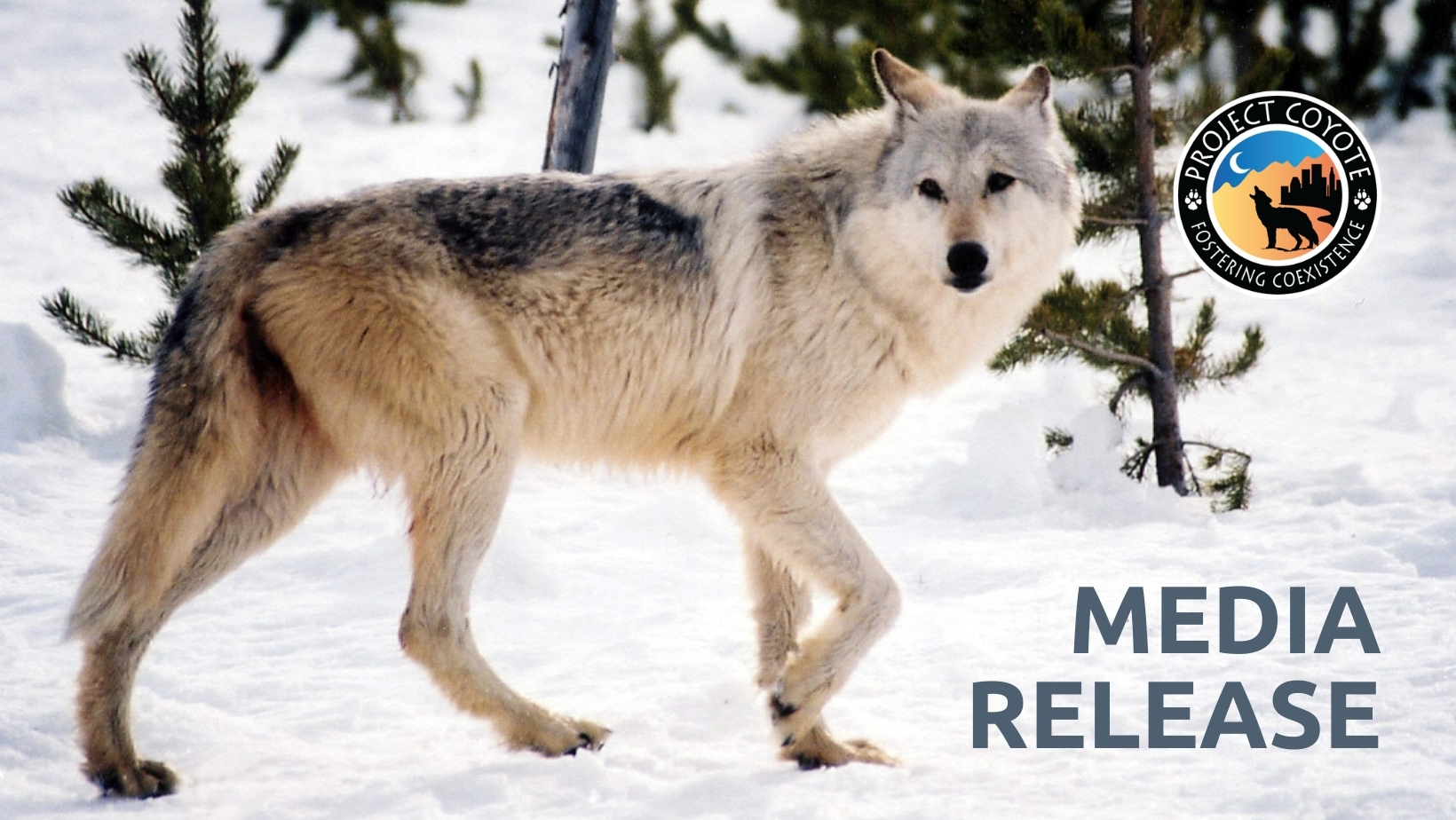For Immediate Release: October 27, 2021
Wolf Coalition Celebrates Return Of Mexican Gray Wolf “Anubis” To Northern Arizona
FLAGSTAFF, Ariz. – Wandering Mexican gray wolf m2520 (named “Anubis” by schoolkids) has once again made his way north of Interstate 40, the arbitrary current boundary of the federal wolf recovery area. He had occupied habitat west and north of Flagstaff for four months last summer until he was removed by the Arizona Game & Fish Department, translocated 200 miles away on the Apache-Sitgreaves National Forest at the end of August, and immediately started running back towards his preferred habitat.
“It makes perfect ecological sense and common sense that the wolves like Anubis would disperse in this direction,” said Emily Renn, executive director of the Grand Canyon Wolf Recovery Project. “There is a continuous corridor of suitable habitat that connects the Grand Canyon region with the current core Mexican wolf recovery area. There are millions of acres of National Forest and National Park lands and ample food resources for wolves in northern Arizona. This landscape evolved with wolves as a keystone species, and we welcome them back to fulfill their important ecological role.”
“Moving Anubis away from his new territory in northern Arizona didn’t work in August and there’s no reason to think it will work now,” said Greta Anderson, deputy director of Western Watersheds Project. “A better strategy would be to educate local residents and forest users about how to safely live with wildlife including wolves. Anubis isn’t the first, and he won’t be the last, so we’re just going to have to make space for wolves to be wolves and disperse throughout their original habitats.”
Anubis’ northward journey demonstrates that there is good habitat north of Interstate 40, and that the arbitrary boundary is neither realistic nor biologically appropriate. The best available science recommends that any real recovery for Mexican gray wolves include a northern population. A new proposed rulemaking period gives the U.S. Fish and Wildlife Service an opportunity to expand the recovery boundary.
“Wolves are wide-ranging mammals who disperse long-distances so hardline boundaries do not make biological sense with what they naturally do to seek out unoccupied habitat to claim a territory of their own to survive,” said Sandy Bahr, chapter director, Sierra Club – Grand Canyon Chapter. “Many different species of wildlife are shifting their ranges northward in response to climate change.”
“Mexican gray wolves are critically endangered and do not have the luxury of time. It is urgent for the U.S. Fish and Wildlife Service to change the current boundary and allow wolves freedom to roam,” said Erin Hunt, coordinator for Lobos of the Southwest. “Anubis fills us with hope for how resilient these rare wolves are. It’s also up to us to give them the second chance they deserve.”
“Wolves are adventurers and explorers by nature, and despite political barriers and substantial distance, this wandering nature took a young wolf north of I-40,” said Maggie Howell of the Wolf Conservation Center. “If recovery is the goal for Mexican gray wolf program, seeing Anubis peacefully advance to his ancestral territory on his own should be cause for celebration.”
Mexican gray wolves are protected under the Endangered Species Act. Killing a Mexican wolf is a violation of the Federal Endangered Species Act and can result in criminal penalties of up to $50,000, and/or up to one year in jail, plus a potential civil penalty of up to $25,000.
The coalition of organizations working to advance and protect the return of gray wolves to Arizona includes The Grand Canyon Wolf Recovery Project, Lobos of the Southwest, Project Coyote, Sierra Club – Grand Canyon Chapter, Western Watersheds Project, and the Wolf Conservation Center.
###

